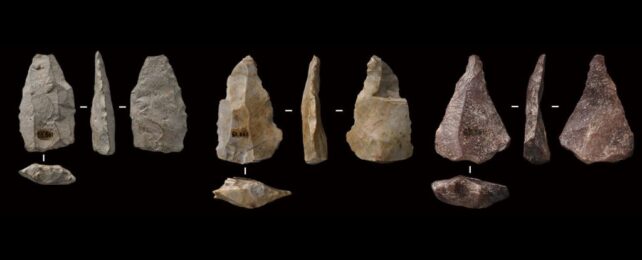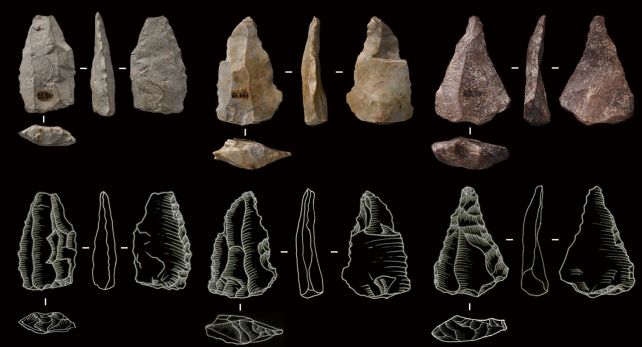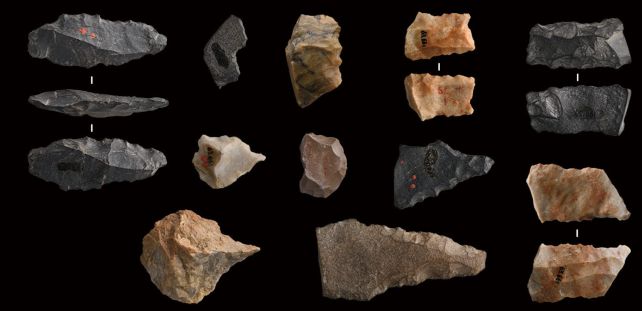New findings at Shiyu.
45,000-Year-Old Tools And Bones Reveal Earliest Evidence of Homo Sapiens in Eastern Asia
Some of the 45,000 year-old stone tools found at the Shiyu site in China.
(Yang et al., Nat. Ecol. Evol., 2024)
Fragments of ancient rock and bone in Eastern Asia are changing our understanding of the history of human migration. They're artifacts found in the Shiyu site of northeastern China, and new analysis has revealed that they were created by
Homo sapiens some 45,000 years ago.
It's the earliest evidence of modern humans in Eastern Asia, suggesting that
Homo sapiens were established at Shiyu by then, and provoking a new interpretation of the cultural artifacts previously found at the site.
"The site reflects a process of cultural creolization – the contact between societies and relocated peoples – blending inherited traits with novel innovations, thus complicating the traditional understanding of
Homo sapiens' global expansion,"
explains archaeologist Francesco D'Errico of the University of Bordeaux.
Some of the stone tools from Shiyu, knapped using the Levallois method. (
Yang et al., Nat. Ecol. Evol., 2024)
Shiyu has been known for decades as a place of archaeological significance. It was inhabited for a long time – the sedimentary sequence is 30 meters (98 feet) deep, and the layers therein were deposited over tens of thousands of years. Buried in the sediment, archaeologists have found a rich assortment of
tools and
artifacts made and used by the people who lived there.
Establishing who those people were, and how long they lived there, has been an ongoing project. The first excavations, in 1963, yielded thousands of objects: 15,000 stone artifacts, thousands of pieces of bone and teeth… and one single hominid fossil, a piece of skull bone identified as belonging to
Homo sapiens.
However, most of the collection was subsequently lost, including the skull fragment.
Undeterred, scientists undertook another excavation in 2013. Led by paleoanthropologist Shi-Xia Yang of the Chinese Academy of Sciences, an international multidisciplinary team has now worked to characterize the site in detail.
Some of the tools recovered at the site, including scrapers, blades, a borer, and an awl. (
Yang et al., Nat. Ecol. Evol., 2024)
They selected a large number of the available artifacts, and analyzed them closely. They studied animal bones found at the site. And they performed new dating analysis, using
radiocarbon and
optically stimulated luminescence techniques to accurately date samples taken from different sections of the sediment sequence.
The dating revealed that the very oldest layer of the sequence was deposited around 45,000 years ago. And the analysis of the artifacts revealed a range of technological skills, such as the
Levallois technique for knapping stone, developed in Europe around 250,000 years ago.
https://www.sciencealert.com/45000-...iest-evidence-of-homo-sapiens-in-eastern-asia



